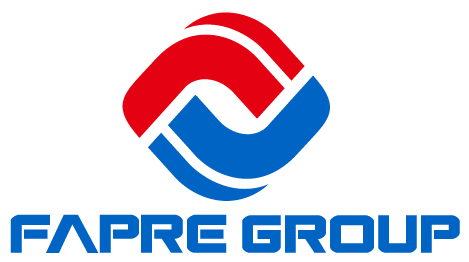NEWS CENTER
PVC flooring, also known as vinyl flooring, is a popular choice in both residential and commercial spaces due to its durability, affordability, and aesthetic appeal. Made from polyvinyl chloride, PVC flooring offers a wide range of styles, textures, and colors, making it a versatile option for various environments. This guide will explore the benefits, types, installation processes, and maintenance tips for PVC flooring, providing a comprehensive understanding of why it is a top flooring choice.
What Is PVC Flooring?
PVC flooring is a synthetic flooring material made from polyvinyl chloride, which is a type of plastic. It is available in different formats, including sheets, tiles, and planks. The flooring is composed of multiple layers, typically including a protective top layer, a printed design layer, and a backing layer. This structure ensures that PVC flooring is resilient, comfortable underfoot, and visually appealing.
Key Benefits of PVC Flooring
1. Durability
PVC flooring is known for its exceptional durability. It can withstand heavy foot traffic, making it suitable for busy households, commercial spaces, and public areas. The wear layer on the surface protects against scratches, dents, and stains, ensuring the flooring maintains its appearance over time.
2. Water Resistance
One of the standout features of PVC flooring is its water resistance. Unlike wood or laminate flooring, PVC flooring does not swell or warp when exposed to moisture. This makes it an ideal choice for areas prone to spills and humidity, such as kitchens, bathrooms, and basements.
3. Ease of Maintenance
Maintaining PVC flooring is straightforward and hassle-free. Regular sweeping and occasional mopping with a mild detergent are typically all that is needed to keep the floor clean and looking new. Its resistance to stains and spills further simplifies upkeep, making it a practical option for busy households and commercial spaces.
4. Affordability
PVC flooring is generally more affordable than many other flooring options, such as hardwood or ceramic tiles. Its cost-effectiveness does not compromise quality, offering a budget-friendly solution that delivers both durability and aesthetic appeal.
5. Comfort and Sound Insulation
PVC flooring provides a comfortable surface to walk on, with a slight cushioning effect that reduces foot fatigue. Additionally, it has sound-insulating properties that help reduce noise levels, creating a quieter environment in both residential and commercial settings.
6. Versatility in Design
Available in a vast array of colors, patterns, and textures, PVC flooring can mimic the look of natural materials like wood, stone, or ceramic tiles. This versatility allows homeowners and designers to achieve the desired aesthetic without the associated costs and maintenance of natural materials.
Types of PVC Flooring
1. Sheet Vinyl
Sheet vinyl is a continuous roll of flooring material, typically available in widths of 6 to 12 feet. It is ideal for covering large areas with minimal seams, providing a seamless and water-resistant surface. Sheet vinyl is commonly used in bathrooms, kitchens, and healthcare facilities.
2. Vinyl Tiles
Vinyl tiles are square pieces of flooring that can be easily installed and replaced individually. They offer flexibility in design, allowing for creative patterns and layouts. Vinyl tiles are often used in commercial spaces, kitchens, and laundry rooms due to their durability and ease of maintenance.
3. Luxury Vinyl Planks (LVP)
Luxury vinyl planks (LVP) mimic the appearance of hardwood flooring, offering a high-end look at a fraction of the cost. They are designed to click together for easy installation, making them a popular choice for DIY projects. LVP is ideal for living rooms, bedrooms, and high-traffic areas.
Installation of PVC Flooring
1. Preparation
- Surface Cleaning: Ensure the subfloor is clean, dry, and free of debris. Any imperfections or moisture issues should be addressed before installation.
- Acclimation: Allow the PVC flooring to acclimate to the room's temperature and humidity for at least 48 hours prior to installation.
2. Installation Methods
- Glue-Down: For sheet vinyl and some vinyl tiles, adhesive is applied to the subfloor, and the flooring is then rolled or pressed into place. This method provides a secure and long-lasting bond.
- Peel-and-Stick: Many vinyl tiles come with a pre-applied adhesive backing. Simply peel off the protective layer and press the tiles onto the subfloor. This method is quick and ideal for DIY installations.
- Click-Lock: Luxury vinyl planks often feature a click-lock system, where the planks interlock at the edges without the need for glue. This floating floor method is straightforward and allows for easy removal and replacement.
Maintenance Tips for PVC Flooring
1. Regular Cleaning
- Sweeping and Vacuuming: Regularly sweep or vacuum the floor to remove dirt and debris that can cause scratches.
- Mopping: Use a damp mop with a mild detergent to clean the floor. Avoid using excessive water and harsh chemicals that could damage the surface.
2. Stain Removal
- Prompt Action: Clean up spills immediately to prevent staining.
- Stubborn Stains: For tougher stains, use a soft cloth and a mixture of water and mild soap. Avoid abrasive cleaners or scouring pads that can scratch the floor.
3. Protective Measures
- Furniture Pads: Place felt pads under furniture legs to prevent scratches and dents.
- Rugs and Mats: Use rugs and mats in high-traffic areas and entryways to reduce wear and tear.
Conclusion
PVC flooring is a versatile, durable, and cost-effective solution suitable for various environments. Its ease of installation, water resistance, and low maintenance make it an attractive choice for homeowners and businesses alike. Whether you're renovating a kitchen, outfitting a commercial space, or designing a cozy living room, PVC flooring offers the perfect blend of functionality and aesthetic appeal. By understanding its benefits, types, and maintenance requirements, you can make an informed decision and enjoy the long-lasting beauty and performance of PVC flooring in your space.
